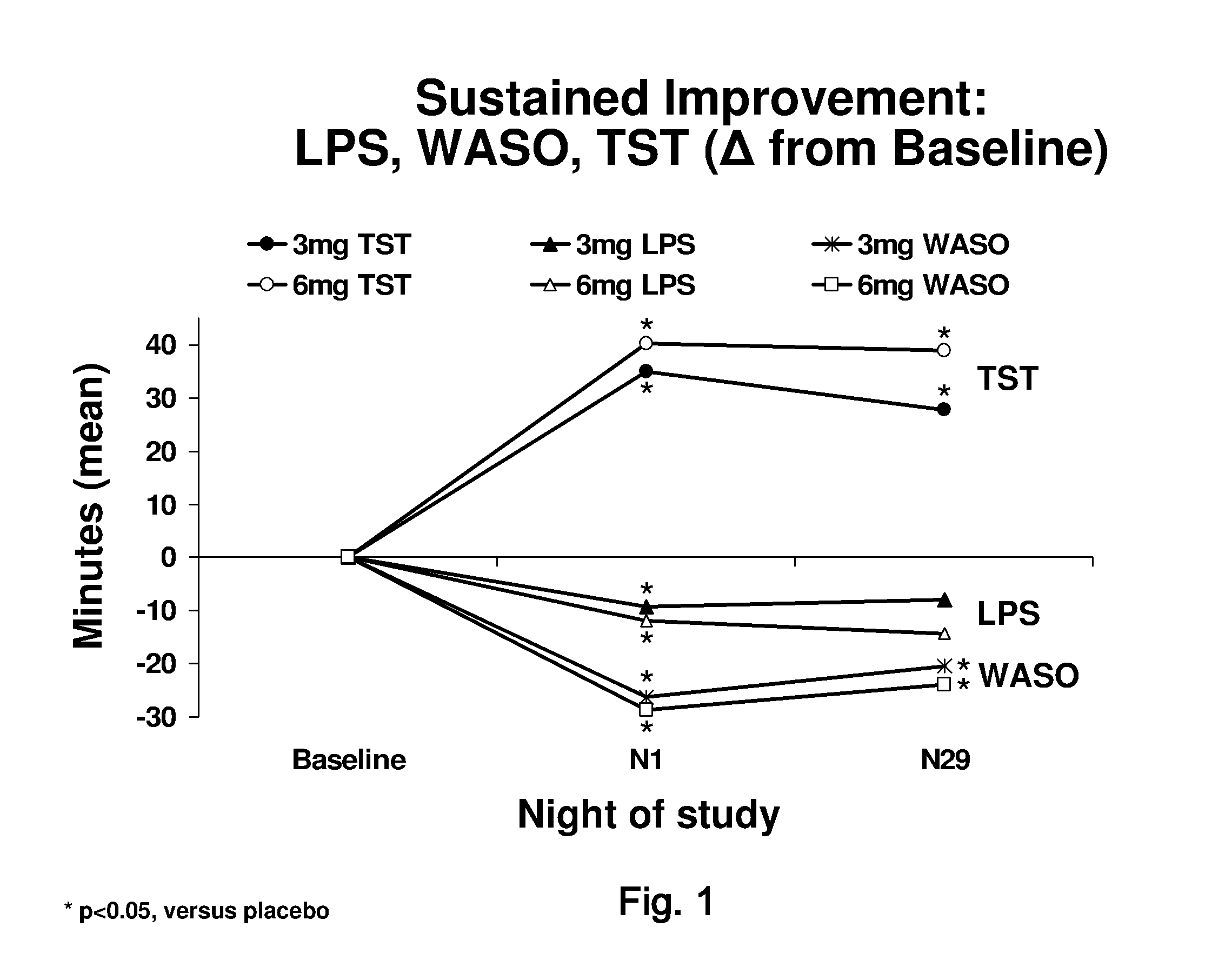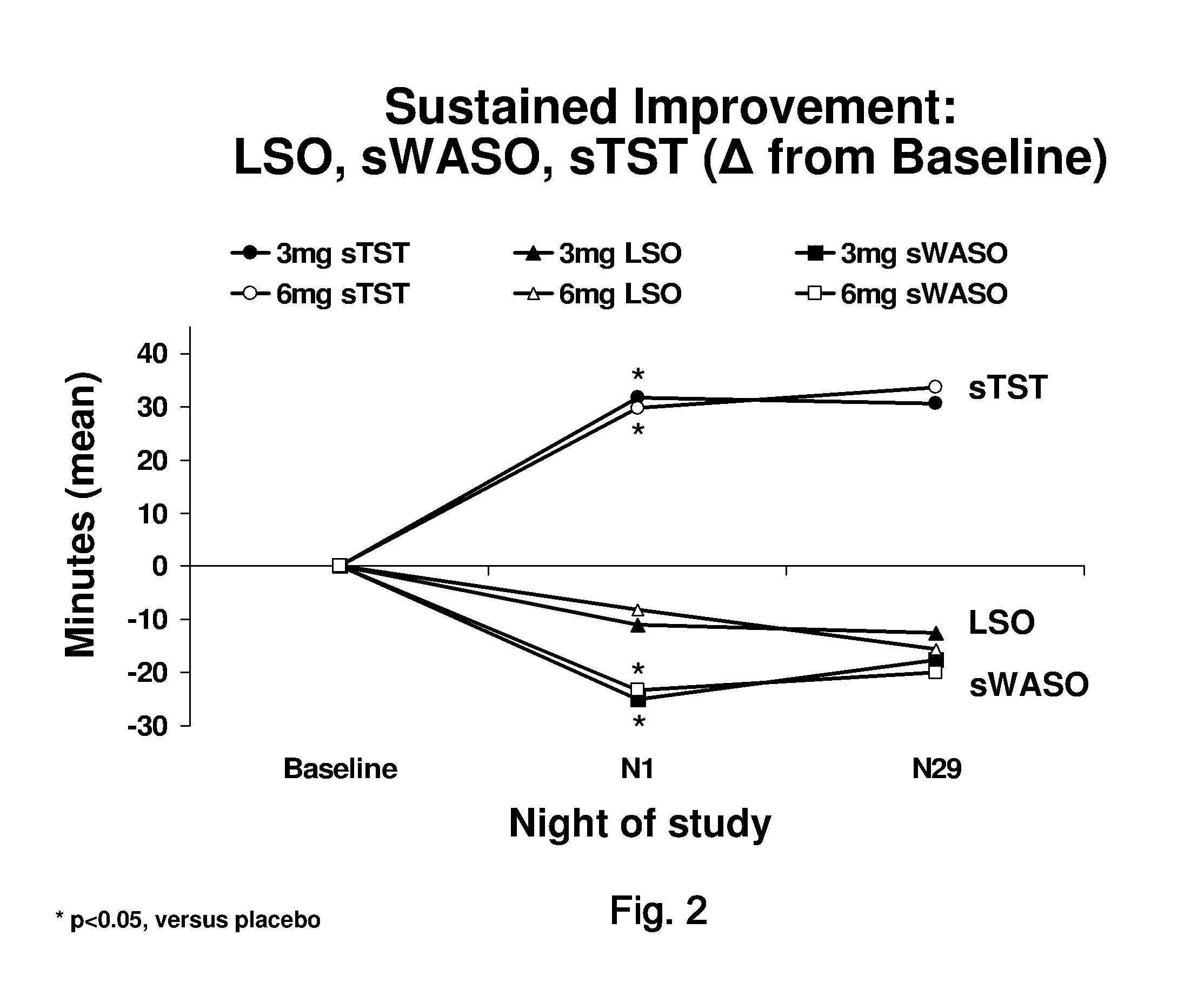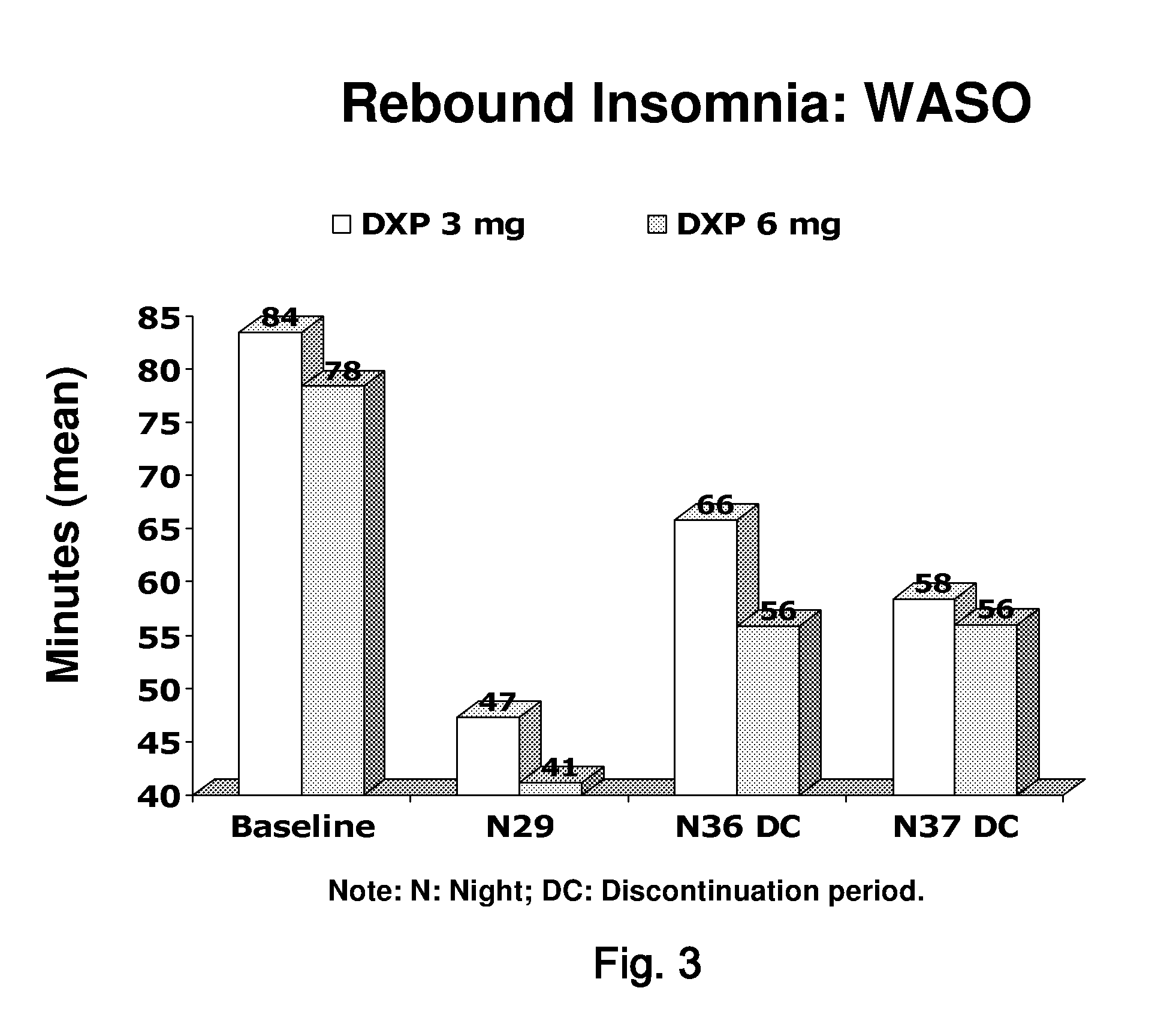Methods of using low-dose doxepin for the improvement of sleep
a low-dose, sleep-enhancing technology, applied in the direction of biocide, heterocyclic compound active ingredients, drug compositions, etc., can solve the problems of rebound insomnia or sedative tolerance, insomnia is a growing health problem, etc., and achieve the effect of avoiding weight gain
- Summary
- Abstract
- Description
- Claims
- Application Information
AI Technical Summary
Problems solved by technology
Method used
Image
Examples
example 1
Synthesis of Doxepin (11-(3-dimethylaminopropylidene)-6,11-dihydrodibenzo-[b,e]-oxepine)
[0090]Part (a) A Grignard compound was prepared in the conventional manner from 4.8 g (0.2 gram-atom) magnesium in 100 ml ether and 30 g (34 ml) (3-chloropropyl)-tertbutyl-ether and 16.40 grams (0.078 mol) 6,11-dihydrodibenzo-[b,e]-oxepine-11-one dissolved in 100 ml ether were added in dropwise fashion so that the contents of the flask boiled lightly. The mixture was heated for 1 hour with agitation in a reflux condenser to complete the reaction and then it was decomposed with ammonium chloride solution. The product which was obtained by separating, drying and eliminating the solvent produced, when the ether residue (24.0 g) was extracted with ligroin, amounted to 20.3 g (80.0% of theory) of 11-(3-tertbutoxypropyl)-11-hydroxy-6,11-dihydrodibenzo-[b,e]-oxepine, having a melting point of 124-126° C. The (3-chloropropyl)-tertbutyl ether was thereafter obtained in the following manner: 19 g (0.2 mol)...
example 2
Phase III Study to Assess the Efficacy and Safety of Doxepin HCL in Primary Insomnia Patients with Sleep Maintenance Difficulties
[0094]A Phase III, randomized, double-blind, placebo-controlled, parallel-group, multicenter study was designed to assess the efficacy and safety of doxepin 3 milligram and 6 milligram in chronic primary insomnia patients with sleep maintenance difficulties. Patients with at least a 3-month history of primary insomnia, according to Diagnostic and Statistical Manual of Mental Disorders, Fourth Edition Text Revision (DSM-IV-TR)-defined primary insomnia were enrolled.
[0095]A total of 240 patients were planned to be enrolled, and 229 patients were randomized. Of these, 221 patients were evaluated for safety (eight patients did not receive double-blind study drug), 220 patients were included in the intent-to-treat (ITT) analysis set, and 205 patients were included in the per-protocol (PP) analysis set.
[0096]Patients were screened (Visit 1) to determine study el...
PUM
| Property | Measurement | Unit |
|---|---|---|
| weight | aaaaa | aaaaa |
| weight | aaaaa | aaaaa |
| weight | aaaaa | aaaaa |
Abstract
Description
Claims
Application Information
 Login to View More
Login to View More - R&D
- Intellectual Property
- Life Sciences
- Materials
- Tech Scout
- Unparalleled Data Quality
- Higher Quality Content
- 60% Fewer Hallucinations
Browse by: Latest US Patents, China's latest patents, Technical Efficacy Thesaurus, Application Domain, Technology Topic, Popular Technical Reports.
© 2025 PatSnap. All rights reserved.Legal|Privacy policy|Modern Slavery Act Transparency Statement|Sitemap|About US| Contact US: help@patsnap.com



